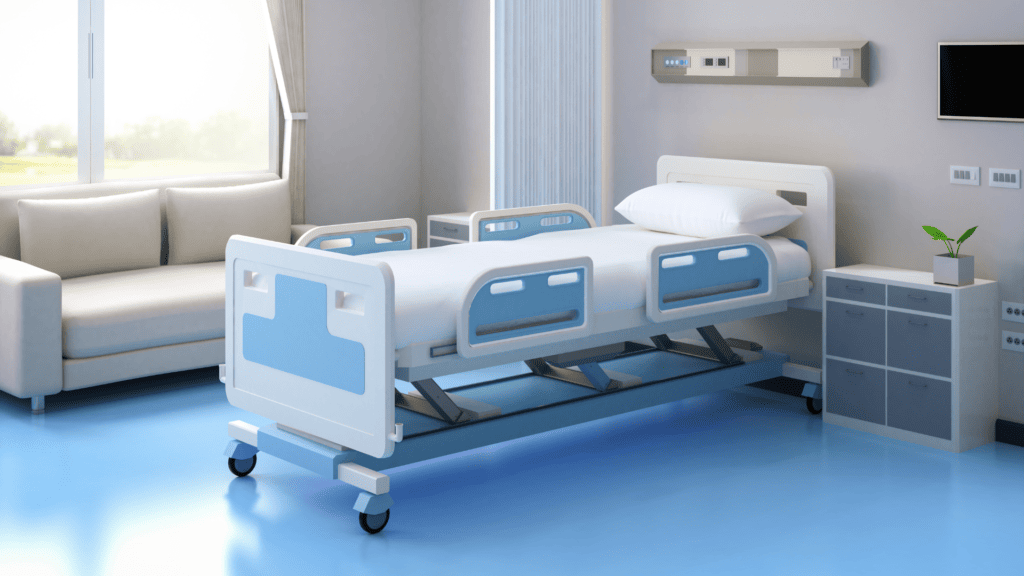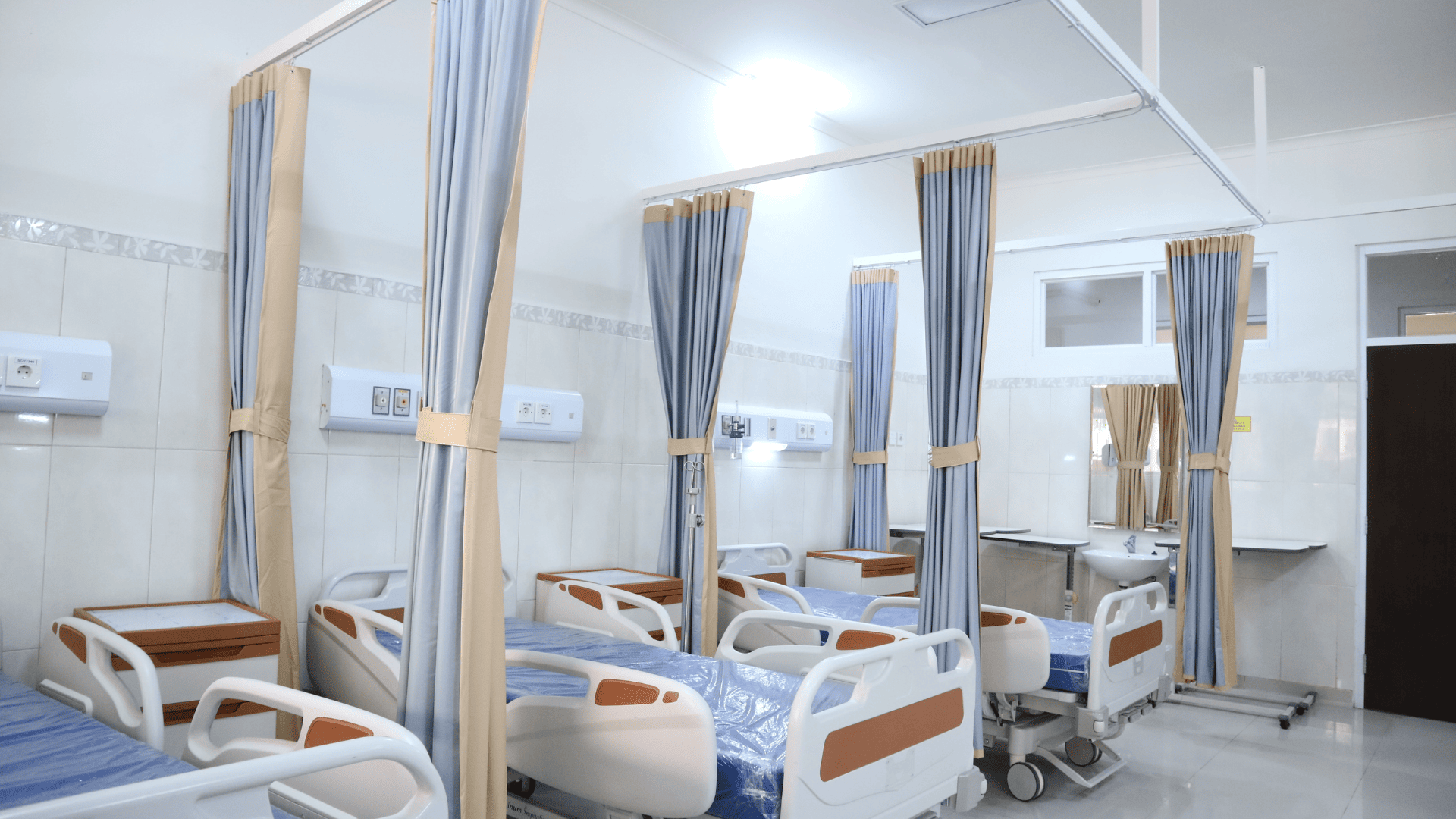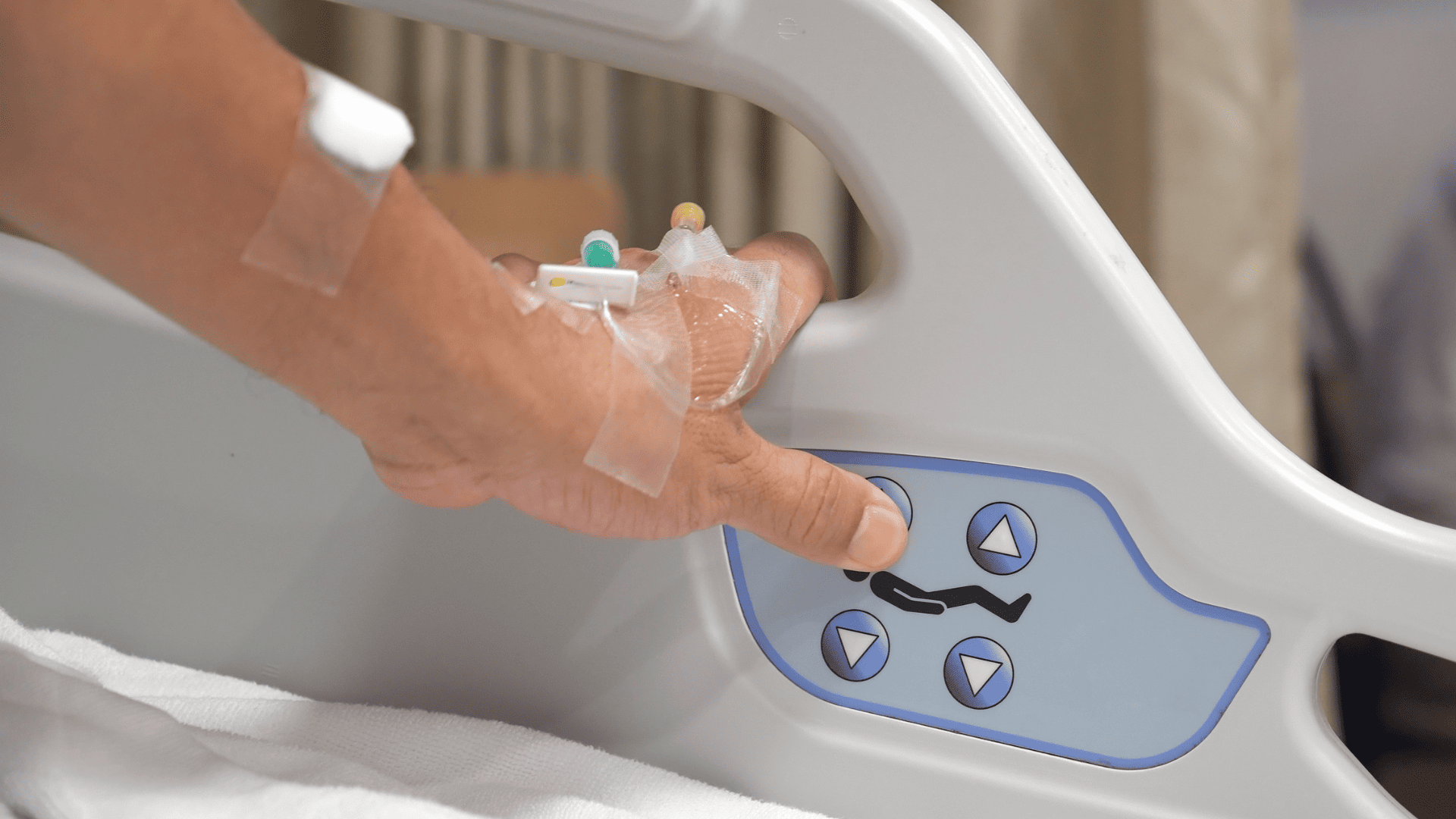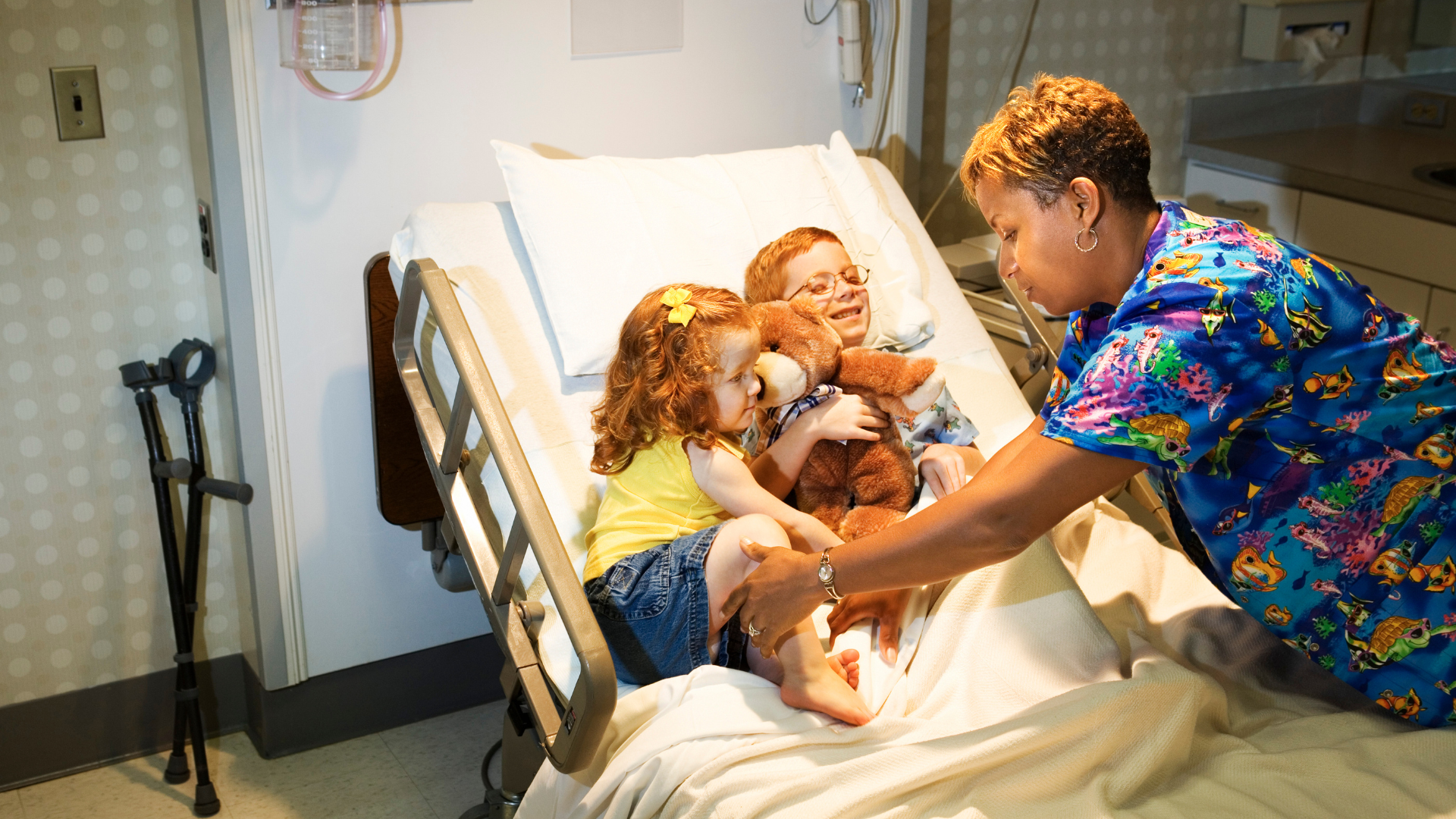There are numerous bed kinds used in hospitals and other medical facilities. It's important to have a wide variety of beds available for treating a wide variety of scenarios and individuals. It might be difficult for first-time customers to determine what features they need in a hospital bed. Let's figure out what they're good for, one by one.
What Exactly Are Hospital Beds?
Hospital beds have specialised features to meet the requirements of hospitals and private homes with medical care. The standard hotel or residential bed is nothing like one of them. Height modification, electrical controls, and movable armrests are all standard. Additional high-tech features may be added to today's hospital beds for patients' and medical staff's safety and convenience. The following are some supplementary options:
Bed Mobility
Beds on wheels can easily move around the room or between floors of a medical facility. When a patient is being transported in or out of bed, the wheels can be locked for safety.
Height Adjustability
The bed's height, footrest, and headrest can all be adjusted independently or simultaneously. These beds have electronic controls instead of the traditional hand cranks found on older models.
Adjustable Side Rails
Bed side rails that may be adjusted for height offer further safety and comfort. The rails have simple buttons that may be used by both patients and personnel. It is possible to use these rails as medical restraints.
Bed Alarm System
A built-in alarm system within the mattress of hospital beds allows for constant patient monitoring and fast medical attention. This function improves patient security and guarantees prompt medical attention.
CPR Capability
Critical care unit (ICU) beds are equipped with a chest compression (CPR) feature to facilitate resuscitation. These beds are constructed to be as supportive and practical as possible during critical procedures.
Types Of Hospital Beds
In addition to hospitals and clinics, hospital beds are also used in home healthcare, nursing homes, and other community healthcare facilities. The following are examples of well-known home medical beds:
Fowler Bed
Fowler beds are specialised beds with four separate portions that are perforated to give patients more mobility and comfort. Commonly utilised in medical contexts, the fowler's position has the patient sitting upright with their knees either straight or bent. The low fowler position involves only a small elevation of the head, while the high fowler position involves an angle of 90 degrees. These beds are used for people who are unable to move and are in need of breathing support, uterine drainage, nasal feeding tubes, or who are at risk of aspiration.
The adjustable Fowler bed features motors, cranks, collapsible side rails, and ABS steel foot and head panels for convenience. They have adjustable backrests and knee rests and either independent or centralised braking systems.
Semi Fowler Bed
The semi-fowler position involves the patient resting on their back with their torso and head elevated by an angle of 15 to 45 degrees. Elevating the foot of the bed and bending the knees may be required, but the angle of elevation is less than that of a fowler bed. Patients with respiratory or cardiac issues, who need lung expansion, or who have a nasogastric tube can benefit from the semi-fowler bed, which is similar to a fowler bed. It helps ease the discomfort of labour for expectant mothers.
Adjusting the height of a semi-fowler bed is a breeze thanks to the included motors or cranks and the sturdy ABS or steel foot and head panels. For added security and portability, they may incorporate foldable side rails.
Electric Beds
Beds that may be adjusted in height and in position for the upper and lower bodies are known as electric beds. Particularly helpful for people whose health necessitates them sleeping in unusual postures, such as those with back problems. People with conditions such as edoema, chronic pain, arthritis, respiratory difficulties, limited mobility, heartburn, and acid reflux can find comfort in electric beds.
Electric beds are distinguished by their collapsible, power-operated side rails, a variety of resting positions, their ability to accommodate standard hospital bed mattresses, their removable head and footboards, and their swivel castors. These beds' electronic controls make them useful in a wide variety of healthcare settings, including at-home care, clinics, hospitals, and nursing homes. Electric beds are designed with the patient's security and comfort in mind, thanks to cutting-edge engineering.
ICU and Critical Care Beds
When it comes to modern medicine, intensive care units (ICUs) are a lifeline for patients in critical condition who need constant monitoring, advanced diagnostics, and individualised care plans. Critical care beds and intensive care beds are the centrepieces of these facilities, representing the cutting edge of medical care. In this article, we'll look at the critical care bed from every angle, including how it's made, what it has, how it affects patients, and how it fits into the ever-changing world of intensive care.
ICU Bed Design and Features
The latest in technology is combined with thoughtful ergonomics and patient-centric design in today's ICU and critical care beds. The sophisticated motor systems built into these beds make it easy to customise the height, as well as the positions of the head, foot, and backrest, with less effort. Having this kind of versatility is crucial for a hospital since it allows for better patient posture and the avoidance of pressure sores and muscle contractures during a wide range of medical operations. Patients can be repositioned and drainage can be improved with the help of beds that include lateral tilt mechanisms.
Bariatric Hospital Beds
The development of bariatric hospital beds is a triumph of diversity and medical progress; these beds are essential in meeting the demands of patients who are morbidly obese or have another serious ailment related to their weight. These beds go above and beyond the standard fare of medical equipment in order to provide a more all-encompassing and sympathetic method of treatment for their patients. Bariatric hospital beds are built to withstand heavy use and are designed with the latest in patient safety technology to ensure the comfort of patients whose medical needs go beyond those of normal hospital beds.
Patients of all shapes and sizes can be accommodated with ease on bariatric hospital beds due to their high weight capability. Increased stability and durability from reinforced frames and support systems reduces the risk of harm to patients.
Conveniently alter the height, the location of your head and feet, and the overall contour of the bed with the help of strong electric motors found in many of today's modern beds. Not only is this flexibility essential for the well-being of the patient, but it also speeds up recovery times and improves the effectiveness of wound care and rehabilitation programmes.
When designing a bariatric hospital bed, patient comfort is still a top priority. Pressure-distribution mattresses are essential in preventing pressure ulcers and improving the health of patients. Patients with special needs can feel safe and comfortable in these beds because of the ergonomic details like extra-wide sleeping surfaces, longer bed lengths, and reinforced side rails.
Paediatric Hospital Beds
A paediatric hospital bed is a symbol of the extra attention and kindness that should be given to children by the medical community. These beds, featuring a synthesis of cutting-edge technology and kid-friendly aesthetics, are tailored to the specific requirements of young patients and help to ensure their physical and mental health as they undergo medical procedures.
When designing a hospital bed for children, it is essential to prioritise both practical medical needs and the comfort of the patient. Beds like these can help make a child's stay in the hospital feel more comfortable and less frightening by adding bright colours and funny patterns. Visual features, such as colourful patterns and imaginative characters, are essential in reducing stress and promoting a good mood.
Paediatric hospital beds are purpose-built to meet the unique needs of young patients, including those who are both smaller in stature and at different stages of development. Kids can be safely and comfortably positioned during medical procedures, throughout recovery, and for post-care by adjusting the bed's height, railing, and angle. In addition, these beds typically have features like built-in weighing, vital sign monitoring, and even interactive entertainment systems to occupy and distract youngsters throughout their hospital stays.
The comfort of young patients is a top priority when designing paediatric hospital beds. To help improve the quality of sleep for young patients who are already struggling with medical issues, specialised mattresses offer support and pressure reduction. These beds are highly flexible, allowing for modifications to suit a wide range of medical procedures, positioning requirements, and activities without sacrificing the child's safety or comfort.
Geriatric and Long-Term Care Beds
Long-term and geriatric care beds are indicative of the changing healthcare landscape, which places a premium on providing humane treatment to the nation's ageing population. These beds are made to accommodate the special requirements of the elderly and those in need of long-term medical attention. Long-term care and geriatric beds are integral parts of today's healthcare facilities because of the special attention they receive in terms of ergonomic design, cutting-edge technologies, and a focus on patient comfort and quality of life.
Excellence in ergonomics and adaptability has been a driving force in the development of geriatric and long-term care beds. Beds like these are designed with the ageing body in mind, taking into account the aches and pains, decreased mobility, and muscular weakening that are common with advanced years. Beds with height, head/foot, and side rail adjustments make it simpler for patients and carers to get in and out of bed, change positions, and shift from one side to the other. Patient comfort is ensured, and injuries and consequences due to immobility are reduced with this flexibility.
The health and safety of elderly or chronically ill patients are of the utmost importance; hence, geriatric and long-term care beds are designed with these populations in mind. The possibility of pressure ulcers is a major issue for people who have limited mobility, but these specially built mattresses can help alleviate some of that pressure. These mattresses enhance blood flow and general comfort to help you get a better night's sleep and enjoy a higher standard of living.
Patient safety is of paramount concern in long-term care facilities, especially those that serve the elderly. The side rails on these beds can be adjusted for more security, and there are also bed escape alarms and locking mechanisms installed. With these safeguards in place, patients who are more at risk of injury due to age or other causes can feel safe at their care facility. The bed's low profile and robust build also provide support when getting in and out of bed or making other adjustments.
Speciality Beds (Burn, Wound, and Pressure Relief Beds)
Speciality beds demonstrate the healthcare industry's potential due to its sophistication and uniqueness. The Burn Bed, Wound Bed, and Pressure Relief Bed are examples of revolutionary medical equipment that may provide patients with unmatched comfort and therapy for a number of illnesses.
The Burn Bed protects fire and heat victims as an homage to human ingenuity. Its cooling actions reduce irritated skin pain and edoema and speed up natural restoration.
Resting on its surface relieves physical and mental agony from bad situations. Pain is replaced by comfort, hopelessness by regeneration, in the Burn Bed.
The Wound Bed, next to the Burn Bed, is an engineering marvel that comforts patients with apparent and undetectable wounds. Its air-filled chambers provide adjustable support that evenly distributes body weight. The Wound Bed comforts individuals recovering from surgery, accidents, or long-term diseases. Self-exploration and revitalisation begin as their wounds heal. The bed becomes a safe sanctuary where the patient's physical rehabilitation mirrors their emotional development, reminding them that scars, both visible and invisible, can drive personal growth.
The Pressure Relief Bed, our third and last fantastic bed, is a refuge for folks with painful ageing or diseased bodies. Its precise structure makes hurting muscles and joints more comfortable and avoids body-support surface contact. The elderly take solace in reflecting on their life and lessons learnt. The Pressure Relief Bed provides a peaceful place to reflect on one's life and cherish the memorable occasions.
These speciality beds combine creativity, compassion, and health care. They demonstrate contemporary medicine's ability to alleviate pain and empower patients to heal. These rooms provide holistic care that considers physical, emotional, and personal growth.
Conclusion
Medical facilities, whether public and private, absolutely require hospital beds. These chairs are designed with the patient's comfort and safety in mind and come with features like adjustable height, electrical controls, and removable armrests. The height and footrests of movable beds can be modified separately or simultaneously, and the beds themselves can be locked for security. The adjustable side rails and in-built alert systems guarantee rapid medical response. During emergency operations, critical care unit (ICU) beds are equipped with cardiopulmonary resuscitation (CPR) equipment.
As well as in hospitals, hospital beds can be found in nursing homes, assisted living facilities, and private residences. The fowler bed, the semi-fowler bed, and the electric bed are all types of this. Fowler beds are perforated and better accommodate patients who require respiratory assistance, uterine drainage, nasal feeding tubes, or who are at risk of aspiration. When it comes to respiratory or cardiac difficulties, lung expansion, or nasogastric tubes, semi fowler beds are a good alternative to fowler beds due to their lower angle of elevation.
People with back issues, edoema, chronic pain, arthritis, respiratory difficulties, restricted mobility, heartburn, and acid reflux can all benefit from the height and positional adjustments available on electric beds. The beds' focus on patient security and convenience make them useful in a wide range of healthcare environments.
Critical care units and intensive care beds are indispensable in modern medicine because they allow for round-the-clock monitoring of patients, access to cutting-edge diagnostics, and the development of individualised treatment programmes. The height, head, foot, and backrest settings of these beds may all be adjusted with the push of a button, thanks to the cutting-edge technology, ergonomics, and patient-centric features with which they were developed. Mechanisms that cause a lateral tilt of the bed further enhance drainage.
Content Summary
- There are numerous bed kinds used in hospitals and other medical facilities.
- It's important to have a wide variety of beds available for treating a wide variety of scenarios and individuals.
- It might be difficult for first-time customers to determine what features they need in a hospital bed.
- Let's figure out what they're good for, one by one.
- Hospital beds have specialised features to meet the requirements of hospitals and private homes with medical care.
- Additional high-tech features may be added to today's hospital beds for patients' and medical staff's safety and convenience.
- In addition to hospitals and clinics, hospital beds are also used in home healthcare, nursing homes, and other community healthcare facilities.
- Fowler beds are specialised beds with four separate portions that are perforated to give patients more mobility and comfort.
- The semi-fowler position involves the patient resting on their back with their torso and head elevated by an angle of 15 to 45 degrees.
- Elevating the foot of the bed and bending the knees may be required, but the angle of elevation is less than that of a fowler bed.
- Patients with respiratory or cardiac issues, who need lung expansion, or who have a nasogastric tube can benefit from the semi-fowler bed, which is similar to a fowler bed.
- It helps ease the discomfort of labour for expectant mothers.
- Adjusting the height of a semi-fowler bed is a breeze thanks to the included motors or cranks and the sturdy ABS or steel foot and head panels.
- Beds that may be adjusted in height and in position for the upper and lower bodies are known as electric beds.
- People with conditions such as edoema, chronic pain, arthritis, respiratory difficulties, limited mobility, heartburn, and acid reflux can find comfort in electric beds.
- These beds' electronic controls make them useful in a wide variety of healthcare settings, including at-home care, clinics, hospitals, and nursing homes.
- When it comes to modern medicine, intensive care units (ICUs) are a lifeline for patients in critical condition who need constant monitoring, advanced diagnostics, and individualised care plans.
- Critical care beds and intensive care beds are the centrepieces of these facilities, representing the cutting edge of medical care.
- The latest in technology is combined with thoughtful ergonomics and patient-centric design in today's ICU and critical care beds.
- The sophisticated motor systems built into these beds make it easy to customise the height, as well as the positions of the head, foot, and backrest, with less effort.
- The development of bariatric hospital beds is a triumph of diversity and medical progress; these beds are essential in meeting the demands of patients who are morbidly obese or have another serious ailment related to their weight.
- Bariatric hospital beds are built to withstand heavy use and are designed with the latest in patient safety technology to ensure the comfort of patients whose medical needs go beyond those of normal hospital beds.
- Patients of all shapes and sizes can be accommodated with ease on bariatric hospital beds due to their high weight capability.
- Conveniently alter the height, the location of your head and feet, and the overall contour of the bed with the help of strong electric motors found in many of today's modern beds.
- When designing a bariatric hospital bed, patient comfort is still a top priority.
- Pressure-distribution mattresses are essential in preventing pressure ulcers and improving the health of patients.
- A paediatric hospital bed is a symbol of the extra attention and kindness that should be given to children by the medical community.
- When designing a hospital bed for children, it is essential to prioritise both practical medical needs and the comfort of the patient.
- Paediatric hospital beds are purpose-built to meet the unique needs of young patients, including those who are both smaller in stature and at different stages of development.
- The comfort of young patients is a top priority when designing paediatric hospital beds.
- To help improve the quality of sleep for young patients who are already struggling with medical issues, specialised mattresses offer support and pressure reduction.
- Long-term and geriatric care beds are indicative of the changing healthcare landscape, which places a premium on providing humane treatment to the nation's ageing population.
- These beds are made to accommodate the special requirements of the elderly and those in need of long-term medical attention.
- Long-term care and geriatric beds are integral parts of today's healthcare facilities because of the special attention they receive in terms of ergonomic design, cutting-edge technologies, and a focus on patient comfort and quality of life.
- Excellence in ergonomics and adaptability has been a driving force in the development of geriatric and long-term care beds.
- Beds like these are designed with the ageing body in mind, taking into account the aches and pains, decreased mobility, and muscular weakening that are common with advanced years.
- The health and safety of elderly or chronically ill patients are of the utmost importance; hence, geriatric and long-term care beds are designed with these populations in mind.
- Patient safety is of paramount concern in long-term care facilities, especially those that serve the elderly.
- The Burn Bed protects fire and heat victims as an homage to human ingenuity.
- Resting on its surface relieves physical and mental agony from bad situations.
- Pain is replaced by comfort, hopelessness by regeneration, in the Burn Bed.
- The Wound Bed comforts individuals recovering from surgery, accidents, or long-term diseases.
- The Pressure Relief Bed provides a peaceful place to reflect on one's life and cherish the memorable occasions.
- They demonstrate contemporary medicine's ability to alleviate pain and empower patients to heal.
- These rooms provide holistic care that considers physical, emotional, and personal growth.
FAQs About Medical Bed
Medical beds support and place patients in hospitals. Medical beds contain head and foot elevation, allowing patients to select comfortable positions for their medical needs. These beds have extra accessories and safety measures, making them suited for hospitals, long-term care centres, and homecare.
Medical beds offer various benefits, including improved sleep quality, enhanced circulation, pain relief, and support for medical conditions. They are particularly helpful in post-surgery recovery and aiding patients with limited mobility.
Yes, there are homecare medical beds designed for home use. These beds offer similar features to hospital beds but are more compact and aesthetically suitable for home environments.
Adjustable medical beds have electric motors that power the adjustable components. Users or caregivers can control the bed's position using a remote or buttons on the side rails.
The coverage of medical beds varies depending on the patient's medical condition and insurance policy. Some medical beds may be partially or fully covered if deemed medically necessary. It's essential to check with the insurance provider for specific coverage details.



